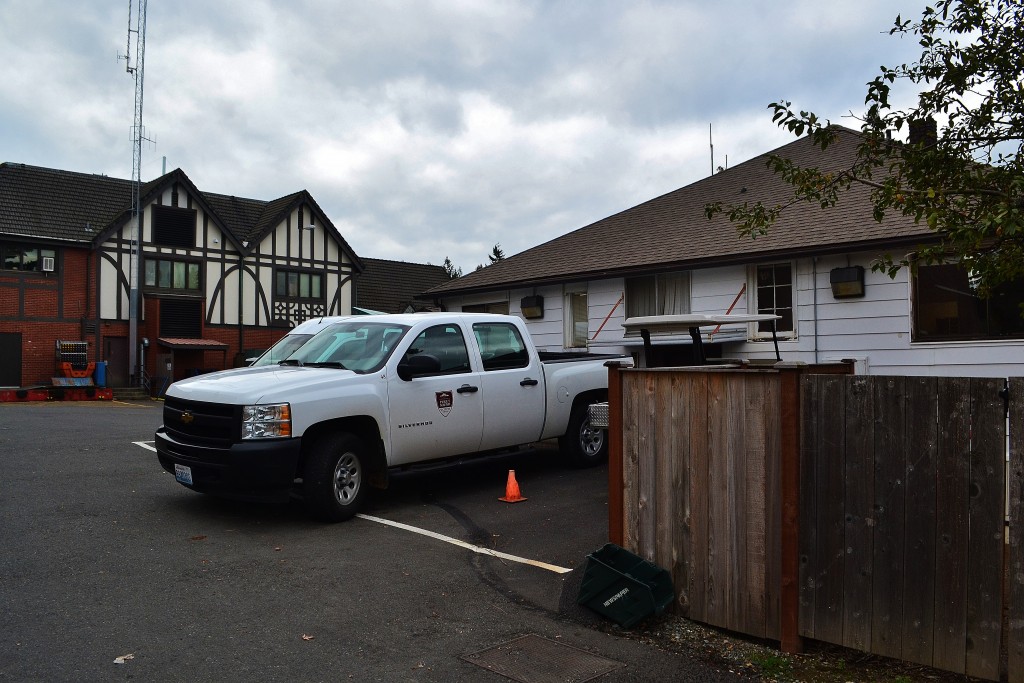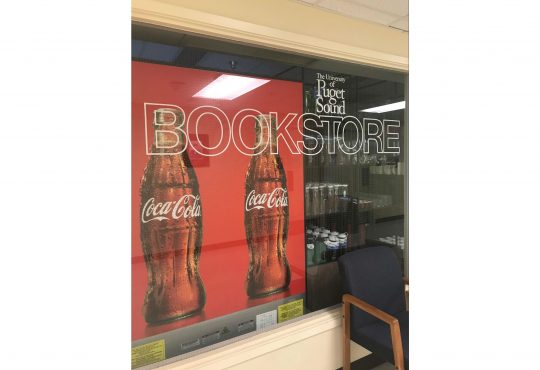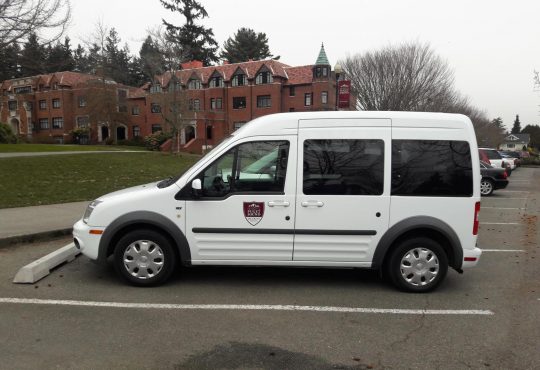
When he heard the shots beginning to fire, the security officer took cover behind a nearby house a block away from the shooting. He immediately reported the danger to a student security dispatcher, who then related the incident to authorities. Soon after, assistance arrived on the scene to help take care of the situation.
South Sound 911, the agency that handles 911 calls for Pierce County, praised the student security workers on duty for how they handled themselves in the midst of a dangerous situation. The training and support that the campus security staff provides allowed the student workers to handle the stressful situations efficiently and with composure.
Security Services employs students to fill three different positions. Campus Safety Assistants (CSA) work outside the security office to lock/unlock campus buildings and rooms, conduct admits for students/staff, observe/report suspicious activity and assist campus safety officers when needed. Student dispatchers answer phone/radio calls and customer walk-ins as well as monitor alarms and cameras in the security office. Lastly, security has office assistants that handle administrative tasks.
Before the student staff takes on campus security duties, they go through 28 hours of training that entails familiarizing themselves with campus geography, radio usage, locking/unlocking buildings, and the appropriate procedure for reporting suspicious activity. Security Services also provide student workers with a manual.
“They work through the manual and get ‘signed off’ on specific training topics by the full-time staff member who is training them” director of security Todd Badham said.
“The initial training is enough so that a new hire can begin working on his/her own, but learning new aspects of the job is an ongoing process and never truly ends,” assistant director of security operations Bill Warner said.
The security staff makes sure that in the event a student does not know how to proceed, there is a campus safety officer on duty that they can reach through radio for guidance. They are directed to not place themselves in harm’s way and campus security officers are told to remove CSAs from the scene if there is an apparent threat to keep them safe from danger. A student security guard at Seattle University encountered a similar situation when a gunman attacked the campus last summer. The student stalled the gunman by spraying him with pepper spray. However, recent changes to the student responsibilities and job descriptions at Puget Sound discourage this type of response. The student staff no longer approaches suspicious people. Instead, they provide radio back-up by asking for further assistance via security’s dispatch system or contacting Tacoma Police.
“In hind-sight these were good changes and I think worked well in this recent incident,” Badham said.
Following each incident, Warner reviews the responses and follows up with the staff. In regards to the recent shooting, security services made sure to debrief all staff involved and a more formal debriefing session will take place with the student dispatcher, the CSA and the campus safety officers involved in the incident. Warner also plans to incorporate this incident in future training sessions as an example from which the staff can learn.
The CSA on duty at the time of the shooting correctly followed the suggested protocol: seek shelter, observe and report. Not only has their training prepared them well, but the students also prove to be dedicated to their job and continue to do their best to maintain a safe campus.
“I cannot speak highly enough about the students who work for me and the positive impact they have on campus, 24 hours a day, 7 days a week,” Warner said.
In addition to security training, the University also adheres to a number of policies and plans concerning violent and emergent situations.
If an emergency situation were to occur on campus, like the shooting on Nov. 3, the University would follow the Emergency Response Plan. This plan would be put into action due to any event of significance. These events include a large fire, death by accident or suicide on campus, or a campus-specific terrorist threat, among others.
The Emergency Response Plan outlines the steps taken by the University to mitigate the issue, inform the campus, and assign roles to individuals that are equipped to take charge in an emergency situation.
First, Security Services will take steps to control the problem. These actions include creating barriers around the scene of the event and being in contact with the Tacoma Police Department and Tacoma Fire Department. While Security is addressing the emergency, a Security dispatcher will use an Everbridge communication system to send mass texts and emails to the campus. Additionally, the Office of Communications will be in communication with the campus community through updates to the campus website and twitter account.
The Emergency Policy Council, which is comprised of members of the President’s Cabinet, will “provide executive leadership,” according to the campus website. The Emergency Policy Council will also receive support from the Emergency Operations Center Management Group, which oversees response management and assists the Office of Communications with updating the community.
Counseling, Health, and Wellness Services (CHWS) will also assist individuals in need of counseling and “will coordinate delivery of critical incident stress management (CISM) services to persons involved in or affected by emergency circumstances,” the campus website claims.
The University also outlines specific roles of staff members in response to an emergency. These staff members include the Dean of Students, CHWS Staff, Security Services, International Programs Staff, Student Affairs Professional Staff, Student Residential Staff and Greek Chapter Presidents.
The Emergency Response Plan at Puget Sound is similar to response plans at other small, liberal arts universities in the Pacific Northwest. All of these plans, at Puget Sound, Willamette, Reed and Lewis and Clark, appoint a specific team to provide communication and leadership for the campus.
Many of these plans, including the one in place at Puget Sound, provide a broad outline for crisis management because emergencies differ in every situation. The purpose of these plans and policies are to prepare the campus to act in the most intelligent way possible in light of terrifying and even horrific events.
Director of Security at Puget Sound Todd Badham urges his campus community to educate themselves on the role they may play in an emergency. The University posts an Annual Security Report on their website in order to inform the students, faculty and staff of the types of crimes occurring on and around campus. In addition, security keeps a public log of reported crimes at the front desk of the security building.
The most important resource for campus members is an informational video about campus gun violence. The video takes the audience through a campus shooting and informs them on the things they should be thinking about and how they should act.
“I think this is one of the best things we’ve got going,” Badham said.
He encourages all members of the campus to watch this video at least once a year.
These resources are available because students, faculty and staff need to develop a basic understanding of what to do before hearing from security, Badham claimed.
Throughout the interview, Badham stressed the importance of students, faculty and staff taking initiative to prepare themselves for emergency situations.
“It’s not about what I can do and what I can do for you,” Badham said. “It’s about what we’re doing together.”






